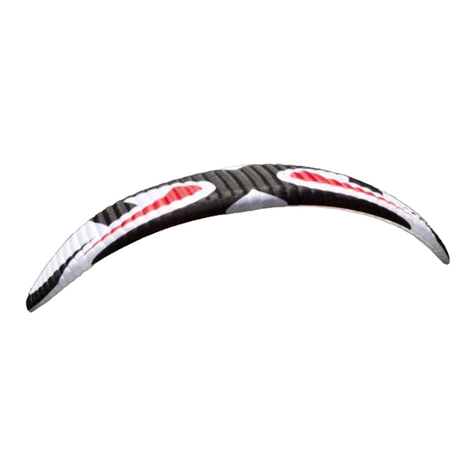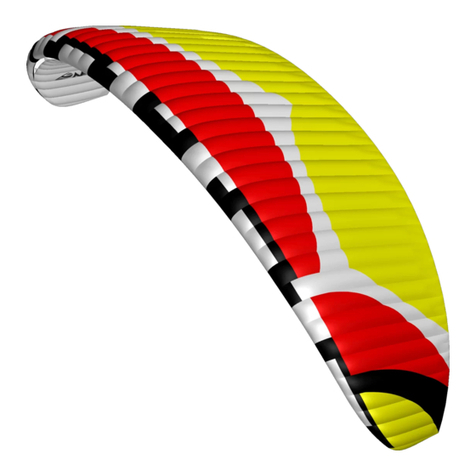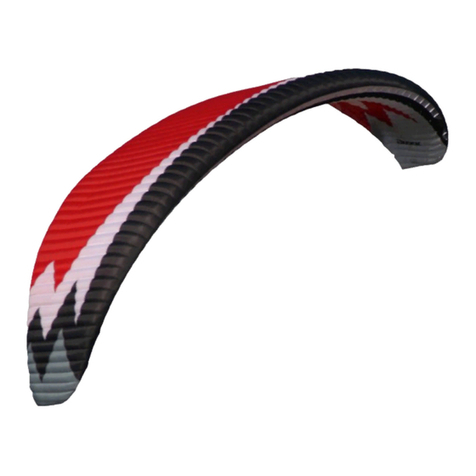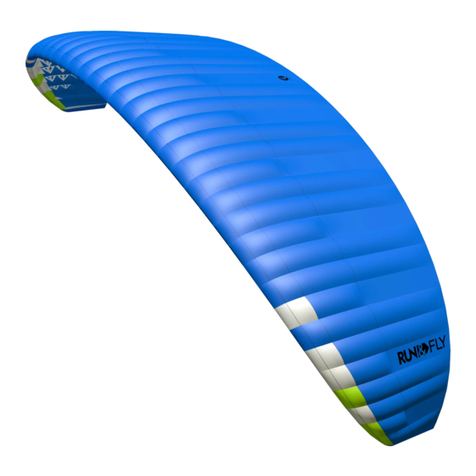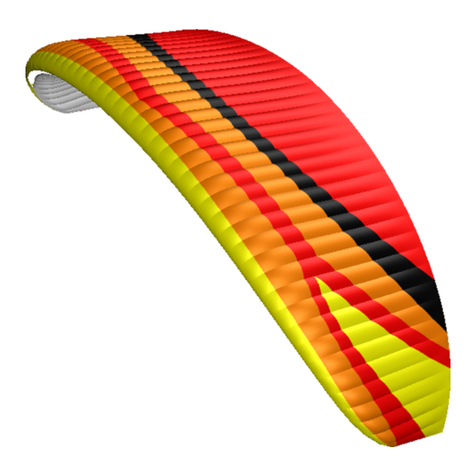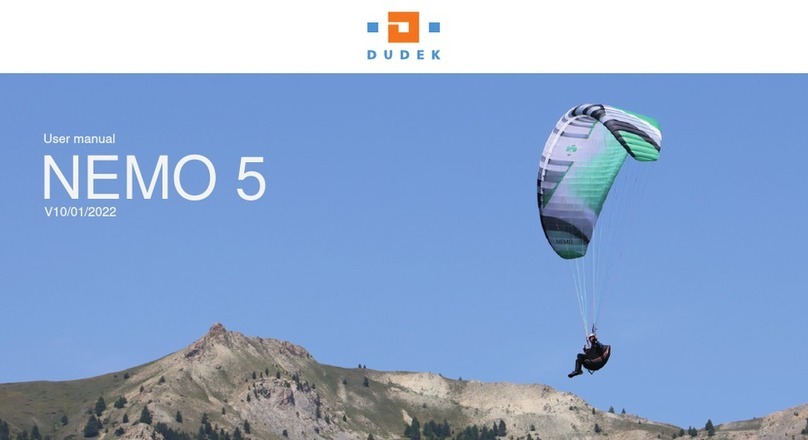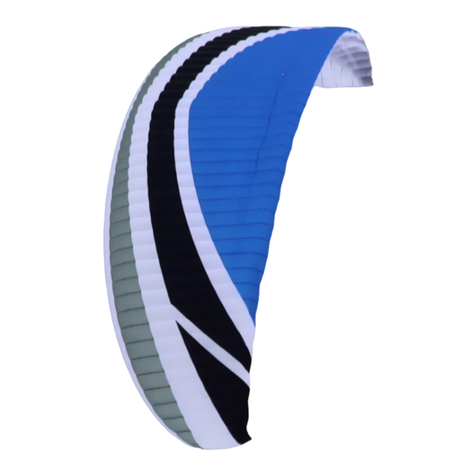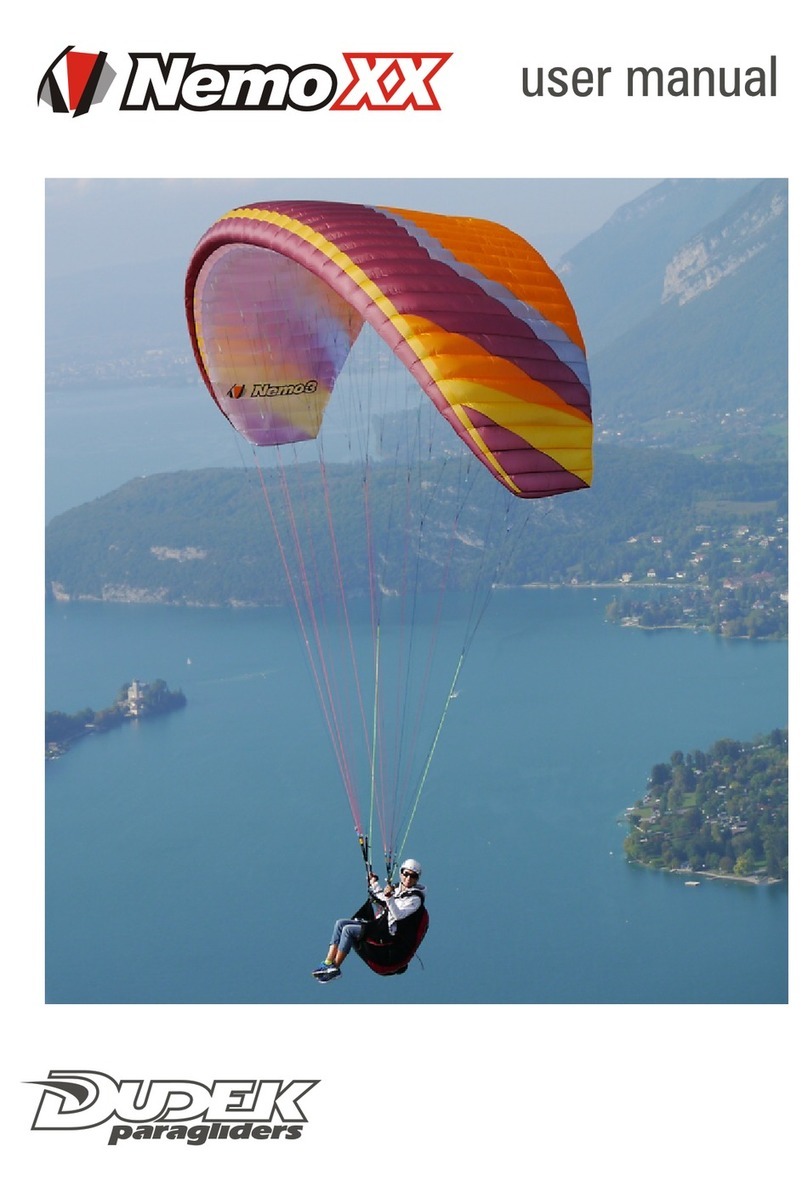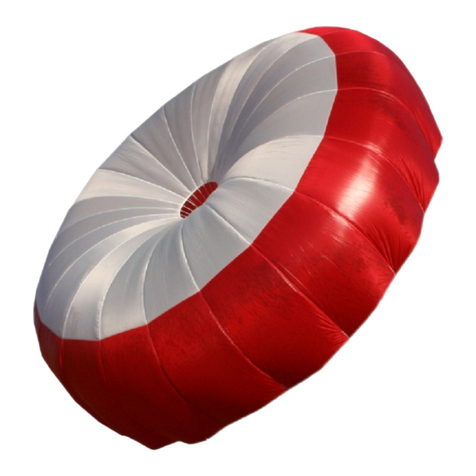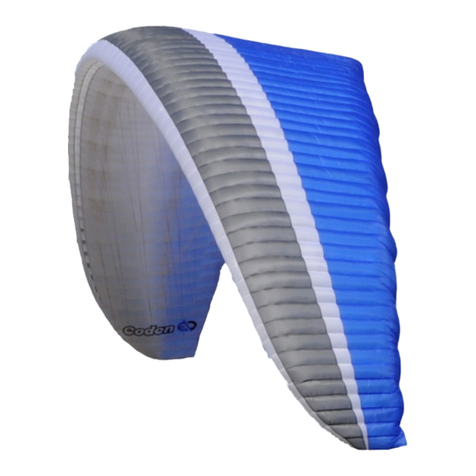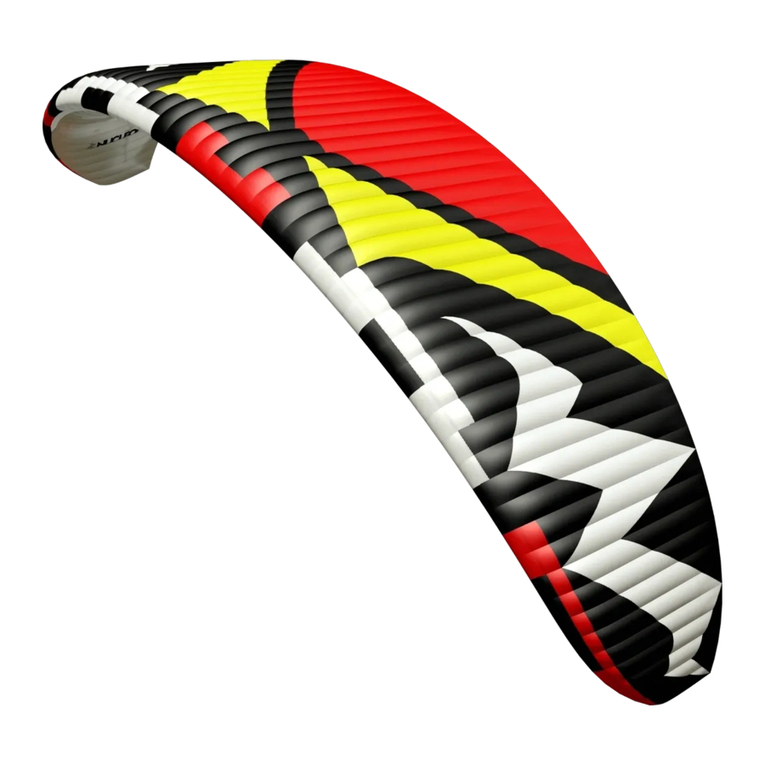
Four additional cells on each side form a clean wing tip and stabilisers
ensure stable straight flight and co-ordinated turns. The airfoil of the VOX is
derived from experience that we got designing and then using our previous
intermediate paragliders. The airfoil was tested any analysed using a
numerical method with a help of computer program. Its thick shape offers
above all, excellent safety.
The VOX presents a closed leading edge to the airflow, while internal
laminated [JWD1] reinforcements maintain its precise form. Some of the
reinforcements are padded with a ribbon to protect wing skin. The cell
openings of the VOX are on the undersurface. Dacron flares at the
suspension points and between-line reinforcements ensure an equal
distribution of load throughout the canopy.
Large cross port vents are cut using hydraulic press and this ensures that
they are smooth and its shape is very accurate. This is turn providing good
reinflation without affecting the profile of the canopy.
RIGGING SYSTEM OF THE DUDEK VOX
VOX lines are made of a strong and stretch resistant sheath-core
construction. Because total length of lines is not big, he coloured polyester
sheath covers brown core made of Technora that is very strong and is not
stretchy.
Because total length of VOX lines is not big, all of them are made of a strong
and stretch resistant sheath-core construction: the sheath consists of
coloured polyester with a core of brown Technora. The rigging system
comprises individual lines looped and stitched at each end. The main lines
and the main brake lines are 2.15 mm in diameter Technora, the cascaded
middle lines 1.5 mm Technora, and the cascaded top lines, 1.1 mm.
The suspension lines comprise of "cascaded top lines" (attach to the
undersurface), "cascaded middle lines" (cascade 2 or 4 top lines together),
and "main lines". Main lines cascade 2 middle lines together and lead to the
"quick link" (a Mallion Rapide that connects lines and risers). Also "stabiliser
lines" connect the upper stabiliser lines on the outer suspension points to a
quick link.
The "brake lines" are not suspension lines. They are cascaded at the same
way and lead from the trailing edge of the canopy through the "pulley" on the
back-risers to the "brake handle".
Risers are coloured for differentiation purposes:
A’ - blue - used for Big Ears,
A - gold - used for launching,
B - red - used for B-stall,
C,D - grey - for deflating the canopy in strong winds (aborting a launch)
44
voxvox
